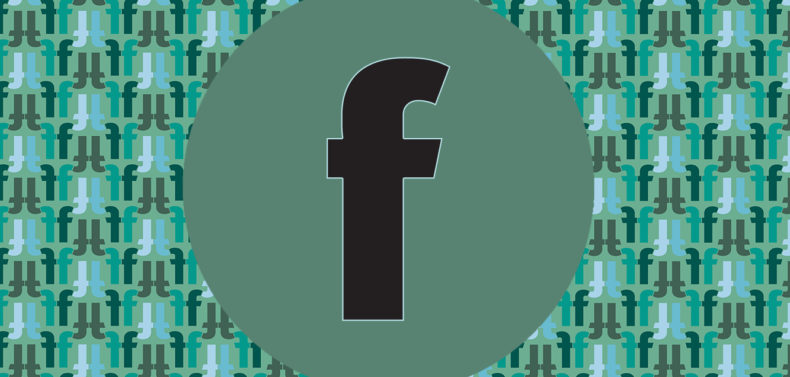The South has been widely recognized as the hip-hop center of the world for more than a decade now. Michael Schmelling captures the style, spirit and soul of the cultural capital of hip-hop in Atlanta (Nov., Chronicle Books), a book of his photographs with essays by Kelefa Sanneh and interviews by Will Welch.
I imagine most photographers arriving in the ATL to shoot the hip-hop scene would go after portraits of some of its biggest stars—Usher in the club, Jermaine Dupree busy in the studio, a smiling Lil’ Jon’s gleaming grill. Or they would go to Buckhead to show what unlikely neighbors Old South money and New South bling make. It could be easily entertaining, but would it capture anything real?
Lucky for us, Schmelling is more on the Larry Clark end of the photography spectrum (though less lurid) than the David LaChapelle end. Covering the near present—2007 to 2009—his work explores the larger culture of Southern hip-hop through the subculture of Atlanta’s scene. There are a few photos of already-made stars such as Big Boi, T-Pain and Shawty Lo, but they are unadorned and interspersed among many more photos of unknown up-and-comers like Lil Texas, Travis Porter, Yung LA and the nicely named group Cash Camp. Many of the subjects are teenagers, and Schmelling takes us into their world of teen parties, home studios built in closets and, for a few, early forays into crime. We get glimpses into Atlanta neighborhoods, homes and, of course, strip clubs, which are important venues for breaking hip-hop singles (and spending them). Schmelling also includes compelling photographs of signs, posters, playlists and other hip-hop writing scrawled on walls, tattooed on bodies and emblazoned on clothes.
Sanneh is a music writer for many publications, including The New Yorker, and his essays are a great counterpoint to Schmelling’s photos. Sanneh gives a short history of the South’s rise to dominance and makes an argument that there really isn’t a defined Atlanta sound. He also explains insider terms such as “white boy swag†and gives pithy and entertaining explanations of musical variations snap, crunk and trap. I would have liked more of Sanneh’s writing simply because I enjoyed it so much, but interviews with André 3000, Big Boi, Gucci Mane, Ludacris, Shawty Lo and The-Dream help round things out.
Sanneh and Schmelling spent time in Atlanta together, documenting the scene and hanging out with their subjects, making the project more cohesive than most photo books with an essay attached. Overall, the book is an uplifting representation of the Atlanta scene that feels celebratory without ignoring some of its uglier realities. Schmelling admirably gets beyond hip-hop clichés and shows a side of the city most mainstream hip-hop publications miss. A website (www.atlbook.com) for the book will contain a mixtape, videos and other features. For more information on Michael Schmelling, visit www.michaelschmelling.com. There is also a launch and book signing at Criminal Records in Atlanta on Nov. 13 from 3–6 p.m.
There is no shortage of books written by musicians (or “written with,†which means ghost written), but it’s rare for musicians to really cross over to the more subdued world of letters. After years of playing in bands, including Girls Against Boys, Johnny Temple founded and continues to run the wonderful indie publisher Akashic Books (www.akashicbooks.com). Richard Hell is like some dean of underground lit, writing fiction and poetry, contributing to books on the punk scene, and editing CUZ Editions (www.richardhell.com/cuzlist.html). And, recently, Thurston Moore and Eva Prinz launched Ecstatic Peace Library (www.ecstaticpeacelibrary.com), a publisher of books on art and photography as well as prose work, most of which are connected in some way to music. Moore’s foray into book publishing is an extension of his previous ventures, Ecstatic Peace Poetry Journal and Ecstatic Peace Records and Tapes (www.ecstaticpeace.com), and is aimed at the same underground art and music audience that he helped to build and define through Sonic Youth.
Ecstatic Peace Library titles are eccentric works with an aesthetic sense you’d expect from Moore. Books already published by Kim Gordon, Yoko Ono, photographer Justine Kurland and poet Charles Plymell will be joined by an impressive fall and winter list. Raymond Pettibon: Front Row Center (Nov.) is a collection of the Los Angeles artist’s drawings focused on music, including early work he did for the SST label. Party with Me Punker: Early 80s Southern California Hardcore Scene (Nov.) is a collection of photographs and writing by Dave Markey and Jordan Schwartz who covered bands like Suicidal Tendencies and Minutemen in their zine, We Got Power. Moore’s own paintings and other art will be featured in the book In Silver Rain with a Paper Key (Dec.). All three of these books will be packaged with a 7-inch EP (Moore’s with two).
Moore recently told The New York Times Magazine that he was most excited about James Hamilton: You Should Have Heard What I Just Said (Nov.). Hamilton was a photographer for Crawdaddy! and the Village Voice in the ’60s and ’70s, and was a protege of Diane Arbus and Eugene Smith. His archive has been largely untapped until this collection, which Moore edited. Hamilton’s work features some really amazing portraits and covers many genres, from funk (James Brown, Stevie Wonder, Gil Scott-Heron) to jazz (Ornette Coleman, Charles Mingus, Elvin Jones) to rock (Patti Smith, The Ramones, Captain Beefheart).
It’s a busy fall and winter for music books—here are more notable titles. Cover art and design continues to be fetishized in Funk & Soul Covers (Sept., Taschen) and The Record: Contemporary Art and Vinyl (Sept., Duke University Press), an exhibition catalog for a show at Duke University’s Nasher Museum through Feb. 6. Please Don’t Bomb the Suburbs (Sept., Akashic Books) is graffiti writer William “Upski†Wimsatt’s follow up to his ’90s cult hit Bomb the Suburbs. Saxophone Colossus: A Portrait of Sonny Rollins (Sept., Abrams) celebrates the 80th birthday of one of jazz’s all time greats. Kenneth Silverman’s Begin Again: A Biography of John Cage (Oct., Knopf) is the first comprehensive look at this central figure in avant-garde music and art. Rob Chapman separates fact from the myths and legends in A Very Irregular Head: The Life of Syd Barrett (Nov., Da Capo). John Einarson’s Forever Changes: Arthur Lee and the Book of Love (Sept., Jawbone) reveals the man behind the band Love. Ann Powers and Daphne Carr guest edit the next installment of Best Music Writing 2010 (Nov., Da Capo). Austin City Limits: 35 Years in Photographs (Sept., University of Texas Press) features the work of Scott Newton, in-house photographer for the show. Antony and the Johnsons: Swanlights (Oct., Abrams) is a collection of paintings, photographs, drawings, writings and more from Antony. Adam Bradley and Andrew DuBois edited The Anthology of Rap (Oct., Yale University Press), a sprawling collection that explores rap’s poetic and lyrical traditions. Not to be outdone, Simon Goddard has compiled Mozipedia: The Encyclopedia of Morrissey and the Smiths (Sept., Plume). Sara Marcus of Le Tigre reflects on a movement in Girls to the Front: The True Story of the Riot Grrrl Revolution (Sept., HarperPerennial). Kristin Hersh’s Rat Girl (Sept., Penguin) recounts her struggles with bipolar disorder and her days in Throwing Muses. Keith Richards tells it like he remembers it in his autobiography Life (Oct., Little Brown). The England’s Dreaming Tapes (Sept., University of Minnesota Press) is a companion volume to Jon Savage’s classic punk tome England’s Dreaming. In Totally Wired: Post-Punk Interviews and Overviews (Sept., Soft Skull Press) Simon Reynolds interviews the likes of David Byrne and Lydia Lunch. In Kids of the Black Hole: Punk Rock in Postsuburban California (Nov., University of Oklahoma Press) Dewar MacLeod lends a scholarly perspective to the scene that spawned bands like Black Flag, The Germs and X. The Beautiful & The Damned: Punk Photographs by Ann Summa (Nov., Foggy Notion Books/Smart Art Press) offers images from that same L.A. scene. Photographer Lyle Owerko’s The Boombox Project: The Machines, the Music and the Urban Underground (Oct., Abrams) combines photographs and interviews to explore the machines that seem like dinosaurs in the age of the iPod. Jay-Z reveals what’s behind some of his lyrics in Decoded (Nov., Spiegel & Grau). Rick Bass uses the real life stories of the Brown siblings from Arkansas in his novel Nashville Chrome (Sept., Houghton Miffling). Marcus Gray’s Route 19 Revisited: The Clash and London Calling (Oct., Soft Skull Press) tells the story behind the iconic album. Joy Division (Oct., Rizzoli) features iconic photographs of the band by Kevin Cummins. Listen to This (Sept., Farrar, Straus & Giroux) is a collection of essays by New Yorker music critic Alex Ross.
Like what you just read? Support Flagpole by making a donation today. Every dollar you give helps fund our ongoing mission to provide Athens with quality, independent journalism.







